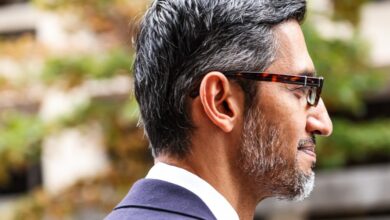Data shows Gen Z is finally ready to spend more–but it’s getting harder to sell them anything


After a few recent years of tightened budgets, Gen Z is finally showing some signs of increased spending. Great news for brands, right? Maybe. Shoppers in this rising generation are now ready to splurge on their favorite products, but it comes at a price. Gen Z’s bar for what they’ll buy has gotten a lot higher, and it’s going to take more than one-off sales tactics and digital offers to win them over.
Over the last five to 10 years, convenience was a primary purchase motivator among shoppers. Every year, we survey a sample of 2,005 US consumers to get a sense of buying habits. According to this year’s Consumer Culture Report, it’s getting harder and harder to persuade today’s shoppers, and even more difficult to identify which channels are breaking through to them. We’re all dealing with content overload. And Gen Z can now be pickier purchasers. The result? Brands need to consistently message across every channel. They need to create a storytelling journey across TikTok, email, streaming networks, in-store, and more. They need to be everywhere that their buyers are, and the messages used across these channels need to be channel-specific, but also tell a cohesive, authentic narrative.
In a world inundated with choices and overflowing with information, brand recognition, and a unified, multi-channel messaging strategy are re-emerging as the linchpins of successful marketing. The full findings from the report not only underline this important shift for brands looking to win over Gen Z, they also bring forward several new, specific trends in what today’s shoppers are looking for.
Peer pressure is everything
Perhaps the most intriguing revelation is that for most consumers, word of mouth remains the primary driver of purchasing decisions. It encompasses recommendations from friends and family, but for those under 55, it also extends to user-generated content across social media. Online customer reviews and testimonials come in a close second, while celebrity endorsements wield far less influence.
In-store shopping is back in full force
Consistency in messaging across every channel is paramount in optimizing the consumer shopping experience. Surprisingly, nearly 50% of Gen Z now prefers in-store browsing, signaling a departure from the convenience-focused online shopping habits of previous years. It’s a shift towards a more hands-on, personal connection with their favorite brands. According to the report findings, the top three ways brands could consider enticing younger shoppers to shop in-store are with exclusive in-store deals (46%), exclusive in-store products (40%), and aesthetics/store setup as an experience or destination (39%).
Spending more on health, wellness, and travel
While electronics and technology ranked as the highest splurge category in the study across all ages except for the 35-to-44 demographic, health and wellness was also ahead of the pack, and travel and excursions is gaining significant momentum. However, without persuasive messaging across all channels in these two growing categories, it’s clear from the findings that marketers may miss the opportunity to convert potential customers.
The report reveals that consumers often overestimate their planned spending, underscoring the importance of clear brand messaging. They want to invest in themselves, so it makes sense they are spending generously in categories like health and wellness. But for brands to convert consumer spending desires to actual purchases, it all falls to how they message the value proposition of that trip or experience on personal well-being. This is a key area for travel and experience brands, as well as brands in other categories, to explore in their messaging this year and beyond.
Other notable findings from the 2024 Consumer Culture Report include a preference for micro-influencers over macro-influencers and celebrities among younger consumers and a tendency for consumers aged 15-44 to splurge rather than save in their top categories.
It’s evident that the modern consumer is seeking a seamless, consistent brand experience that transcends channels. In this era of information overload, the power of word-of-mouth and unified messaging cannot be overstated. Brands that embrace this multi-channel brand experience will thrive in the ever-evolving world of consumer culture.
Dara A. Busch is the co-CEO of 5WPR.
More must-read commentary published by Fortune:
The opinions expressed in Fortune.com commentary pieces are solely the views of their authors and do not necessarily reflect the opinions and beliefs of Fortune.
Source link




